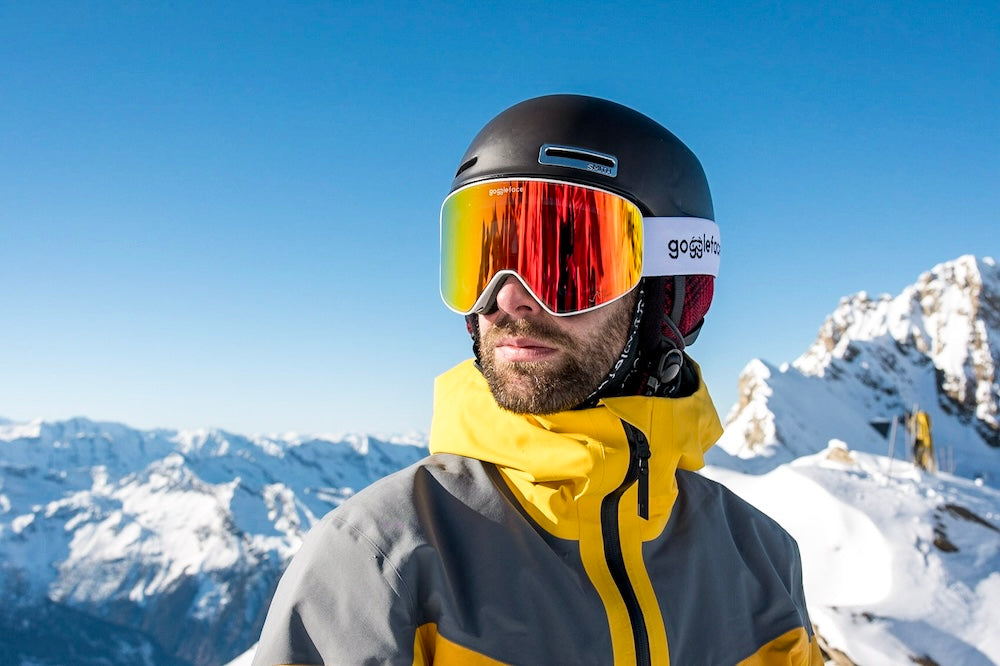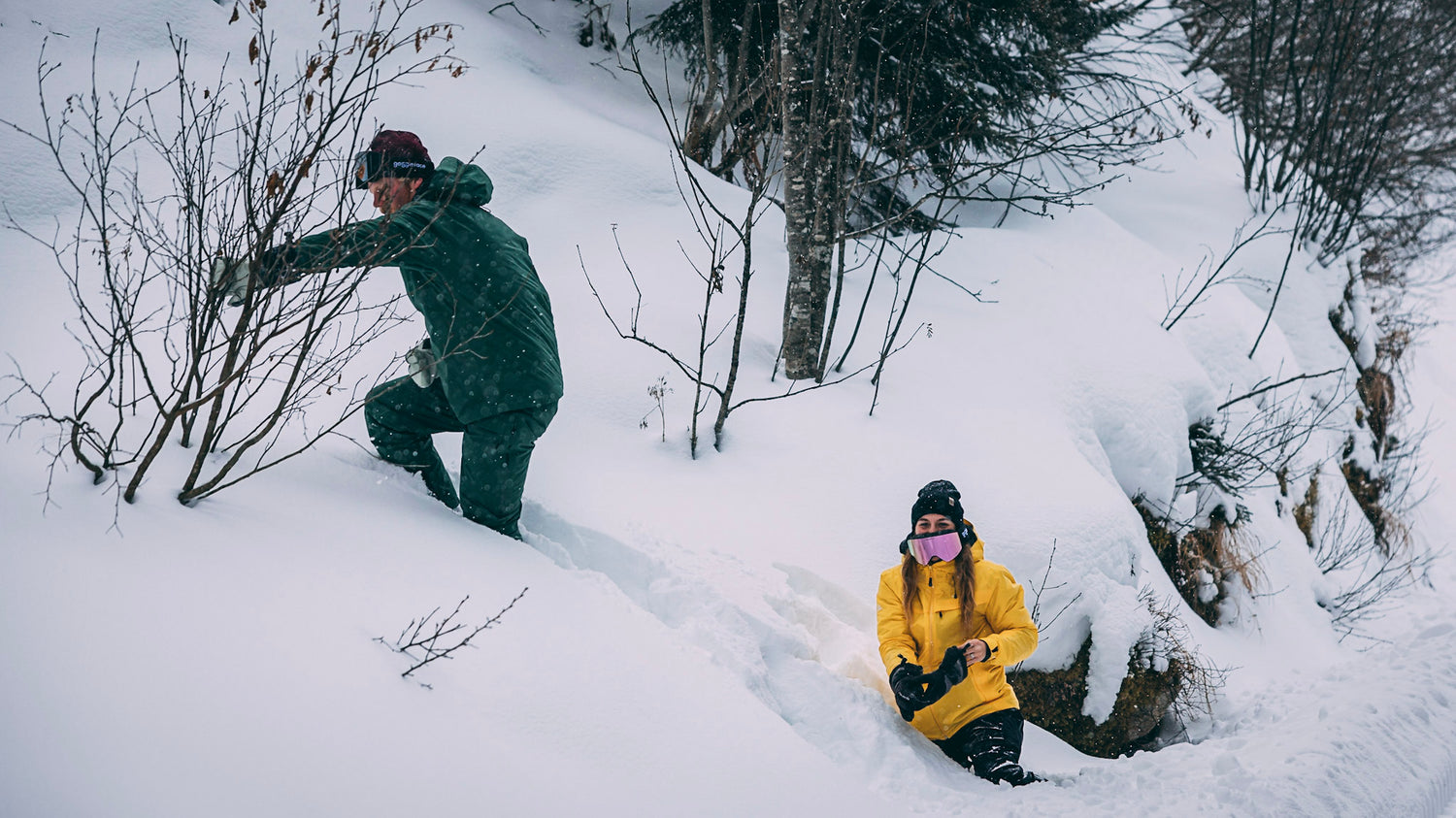The best ski goggles: how to choose the perfect ski goggles for your winter sports adventure?
When the first snowflakes fall, most winter sports enthusiasts start dreaming of snowy slopes and fresh mountain air. But to fully enjoy your skiing or snowboarding experience, it's essential to have the right equipment—and it starts with good ski goggles. What makes a pair of ski goggles the best choice? Should you focus on UV protection, anti-fog properties, or style? In this blog, we dive into the world of ski goggles and give you the best tips to choose the perfect pair.
Why are good ski goggles important?
Ski goggles are more than just a fashion accessory. They play a crucial role in your safety and comfort on the slopes. High-quality ski goggles protect your eyes from harmful UV rays, prevent glare from the sun, and provide clear vision, even in poor weather. Additionally, good ski goggles prevent your eyes from watering due to wind or cold. In short, ski goggles ensure you can enjoy the slopes longer and safer.
What are the key features of good ski goggles?
When choosing the best ski goggles, there are several factors to consider. Here are the key features:
- UV protection: Just as sunscreen protects your skin, ski goggles protect your eyes. Always choose goggles with 100% UV protection to prevent damage from sunlight.
- Anti-fog lens: There's nothing more annoying than foggy ski goggles on the slopes. Anti-fog technology, such as the super anti-fog lens from Goggleface, ensures your vision remains clear.
- Lens color: Depending on the weather and light conditions, the lens color can make a big difference. A yellow lens enhances contrast on cloudy days, while a mirrored lens is great for sunny days.
- Fit and comfort: Pay attention to the fit and ensure the goggles align well with your helmet. They should sit comfortably without pressure points.
- Ventilation: Good ventilation helps regulate airflow and prevents fogging.
- Bio-based materials: If you care about the environment, it's good to choose ski goggles made from sustainable materials, such as the bio-based frames from Goggleface.
Frequently asked questions about the best ski goggles
Which ski goggles are best for different weather conditions?
Mountain weather can change quickly. That's why it's handy to choose ski goggles with interchangeable lenses, allowing you to switch easily between a clear lens for sunny days and a yellow lens for cloudy or foggy conditions. Ski goggles with photochromic lenses are also a good option, as they automatically adapt to light conditions.
Should I choose cylindrical or spherical lenses?
The difference lies in the shape. Cylindrical lenses curve only horizontally, providing good vision but can cause distortion at the edges. Spherical lenses curve both horizontally and vertically, following the natural curvature of the eye. This results in less distortion and a wider field of vision, which is important when skiing or snowboarding at higher speeds.
How can I prevent my ski goggles from fogging up?
Fogging is a common problem, especially when sweating or when temperatures change quickly. Choose ski goggles with double lenses and good ventilation, such as the models from Goggleface, to minimize fogging. Additionally, avoid placing your goggles on your head when you stop, as warm air from your body rises to the cold lens, causing condensation.
Why should I invest in ski goggles with anti-fog technology?
While cheaper ski goggles without anti-fog technology are available, you'll find they fog up quickly and hinder your vision. It's frustrating and can even be dangerous to descend the slopes with foggy goggles. An anti-fog lens, such as the super anti-fog lens from Goggleface, ensures clear vision in all conditions, making the investment worthwhile.
How do I choose the right size ski goggles?
The right size ski goggles are essential for a good fit and optimal vision. The goggles should fit snugly on your face without applying pressure. At Goggleface, you can choose from different sizes, from small to large, ensuring you find a pair that fits your face and helmet.
Tips to extend the lifespan of your ski goggles
A good pair of ski goggles can last a long time if cared for properly. Here are some tips to extend their lifespan:
- Store your goggles in a protective case: This prevents scratches and damage.
- Clean the lenses carefully: Use a microfiber cloth and avoid paper towels that could damage the lens.
- Let your goggles air dry: Do not place them on a radiator or near a direct heat source to prevent warping.
- Avoid touching the inside of the lens: The inside of the lens often has a special anti-fog coating that can be damaged by fingerprints.
Conclusion
Choosing the best ski goggles can be challenging, but with the right knowledge, it's easier to make an informed decision. The ski goggles from Goggleface offer all the essential features for an optimal winter sports experience: super anti-fog lenses, 100% UV protection, a bio-based frame, and a trendy design. Make sure to choose ski goggles that suit your skiing or snowboarding style, weather conditions, and personal preferences. This way, you'll be ready for your next adventure on the slopes!


